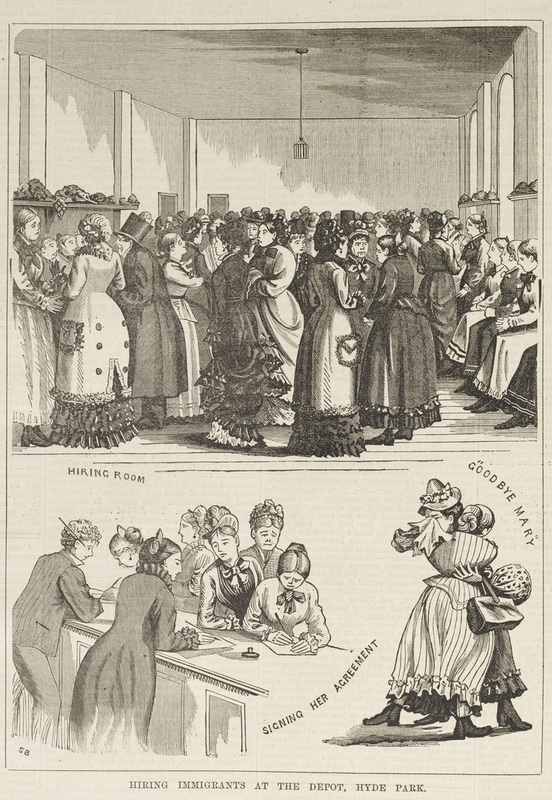Famine Orphan Emigration Scheme 1848-1850
|
In Plymouth the Irish orphan girls, along with all other government assisted emigrants to Australia, were admitted to the Government Immigration Depot, under the care of the CLEC. On the voyage the emigrants to Australia were supervised by a Surgeon-Superintendent, who had complete responsibility for health and welfare, and especially for the moral protection of single young females. Protecting the reputation of single young women was of upmost importance to the CLEC and the colonial authorities, as these girls were arriving as future domestic servants to the middle and upper classes of the Australian colonies and any scandals could damage their possibilities of employment. During the period of the Orphan Emigration Scheme, the Surgeon-Superintendent was supported by Matrons and sub-Matrons who were also assisted emigrants on the ship, receiving a gratuity for their appointments to the posts.
|
|
On arrival in Australia the care of the Irish orphan girls was transferred to Immigrant Orphan Committees, whose members included the Immigration Agent, the Police Magistrate, and representatives of each religious denomination. The ships were met by the Immigration Agent, and personal details of every immigrant was recorded. The Committees established depots for the girls to be housed until they were hired, and they also arranged the official hiring agreements, whether apprenticeship for the younger girls, or regular indentures. In Sydney the Immigration Depot was located at Hyde Park Barracks, a former convict barracks. Immigration Depots were also located in Parramatta, Wollongong, Maitland, Bathurst, Melbourne and Moreton Bay (Brisbane).
The Scheme was ultimately criticised in Australia due to growing unrest as to the calibre of the immigrants arriving on its shores, and the perceived use of the colony for the British government’s "unwanted population" (Reid, 2011, p. 147), and it was ceased after only two years of operation. In all, the CLEC had sent 20 ships with 4,114 Irish orphan girls to the Australian colonies; 2,253 to Sydney, 1,255 to Melbourne, and 606 to Adelaide. In addition 61 girls from Wexford were sent to South Africa.
Of the 4,114 girls sent to Australia, 137 were from Mayo workhouses, and were sent to Sydney and Melbourne over the period 1848-1850. |
Richard Reid's Farewell my Children (2011) is a comprehensive, accessible account of Irish assisted emigration to Australia, with a detailed explanation of the Orphan Emigration Scheme, and has been the main source for the information provided on this page.
For more information, and additional sources, see Further Reading for a list of publications that discuss the Orphan Emigration Scheme.
For more information, and additional sources, see Further Reading for a list of publications that discuss the Orphan Emigration Scheme.
© Barbara Barclay (2015)






